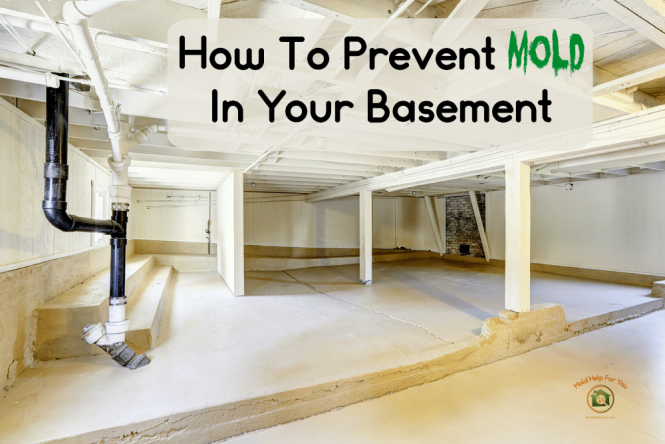

Basement mold is a significant concern for homeowners, as it can affect both the structural integrity of a house and the health of its occupants. Mold growth in basements is a common issue, often stemming from excess moisture and poor ventilation. This comprehensive guide explores the causes, symptoms, and most importantly, the solutions for removing and preventing basement mold. We’ll delve into practical strategies for moisture control, effective remediation techniques, and preventive measures to ensure a healthy living environment. The structure of this guide is as follows: first we’ll understand the issue of basement mold, then detail removal strategies, preventive measures, and finally wrap up with Frequently Asked Questions.
Understanding Basement Mold Growth: Causes and Symptoms
Recognizing the Signs of Basement Mold
Basement mold often manifests as dark, fuzzy patches on walls, ceilings, or floors. Different types of mold may appear in various colors, such as black, green, or white. But this isn’t always the case, sometimes it’s visible as a musty odor or a slippery texture on the walls. Beyond visual indicators, you may also experience health concerns such as respiratory issues, allergic reactions, or skin irritations. Understanding the root causes behind mold growth is crucial for effective prevention and remediation. One of the primary culprits is water intrusion—leaks, poor drainage, or high humidity levels can all contribute to mold development. In addition to water intrusion, improper ventilation is another significant factor. If your basement is poorly ventilated, moisture can become trapped, fostering ideal conditions for mold growth.
Effective Removal Strategies for Basement Mold
Identifying the Type and Extent of Mold
Before initiating removal, it’s crucial to determine the type and extent of the mold problem. Some types of mold are more hazardous than others. If you suspect black mold, consult a professional remediation specialist immediately, as it poses significant health risks. A thorough assessment of the affected areas will determine the appropriate removal method. It’s important to determine whether the mold is superficial or if it has seeped into structural components. Proper identification is essential for choosing the right products and minimizing further spread. Different approaches may be needed for different levels of mold contamination.
Preventing Basement Mold Recurrence
Implementing Long-Term Solutions for Moisture Control
Prevention is often more effective and less costly than remediation. Implementing proactive strategies to control moisture is key to avoiding future mold growth. This involves addressing the root cause of moisture buildup. The methods to control moisture vary, depending on the circumstances and your specific home’s infrastructure. Some examples include fixing leaks or water damage immediately, improving the ventilation of your basement and preventing condensation using dehumidifiers or other similar tools. A dehumidifier, strategically positioned in the basement, helps maintain ideal humidity levels. Regular inspection of plumbing fixtures is also an integral component, to check for potential leaks which could create ideal conditions for mold growth.
Maintaining Proper Ventilation for a Mold-Free Basement
Ensuring Adequate Air Circulation in Your Basement
Adequate ventilation is essential for preventing moisture buildup. Poor air circulation can create a breeding ground for mold. Ensuring proper ventilation in the basement involves ensuring proper air exchange between the interior and exterior of the house. This can be achieved by installing exhaust fans, improving insulation, or sealing air leaks. Regular maintenance and cleaning of ventilation systems are equally important to ensure their effectiveness. For basements with dampness issues, consider installing a moisture barrier to prevent moisture from seeping into the walls and structural components of the building.
Professional Mold Remediation Services
When to Seek Help from Experts
If the mold issue is extensive or you’re unsure about the proper removal techniques, contacting a professional mold remediation specialist is highly recommended. They possess the expertise and specialized equipment to handle the task safely and effectively. Professionals can assess the extent of the mold problem, determine the type of mold present, and employ appropriate remediation methods. They will be able to provide a thorough assessment and a customized solution to your particular needs and prevent further damage.
What are the main causes of basement mold growth?
“Basement mold often stems from water intrusion, such as leaky pipes, roof leaks, or improper drainage. High humidity levels and poor ventilation are also contributing factors. Moisture trapped in the basement creates the ideal conditions for mold spores to proliferate and grow. If a plumbing problem is suspected, be sure to contact a professional immediately.”
How do I identify basement mold?
“Visual inspection is often the first step in identifying basement mold. Look for dark, fuzzy patches on walls, ceilings, or floors. Musty odors or unusual textures can also signal a mold problem. Different types of mold can manifest in varying colors, like black, green, or white. Note that some mold may be hidden and not readily apparent by visual inspection alone, therefore a professional inspection may be necessary.”
In conclusion, preventing basement mold requires a proactive approach that combines preventative measures with prompt remediation strategies. Regular inspections, proper ventilation, and moisture control are key for maintaining a healthy and mold-free environment. For further guidance, consider consulting a professional mold remediation specialist, who can perform thorough assessments and recommend tailored solutions to address specific issues. This proactive approach not only safeguards your home’s structural integrity but also protects your family’s health and well-being.